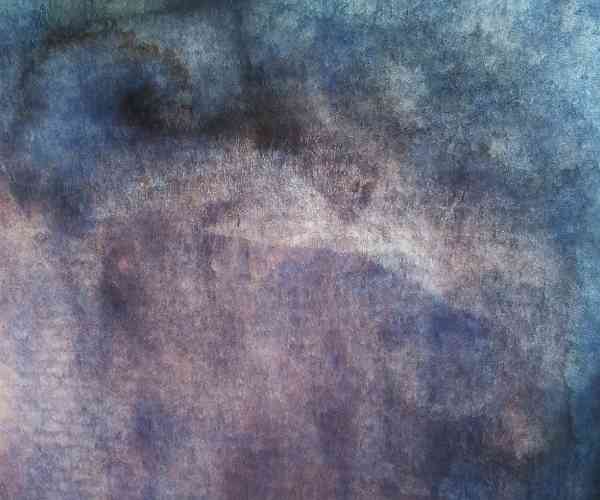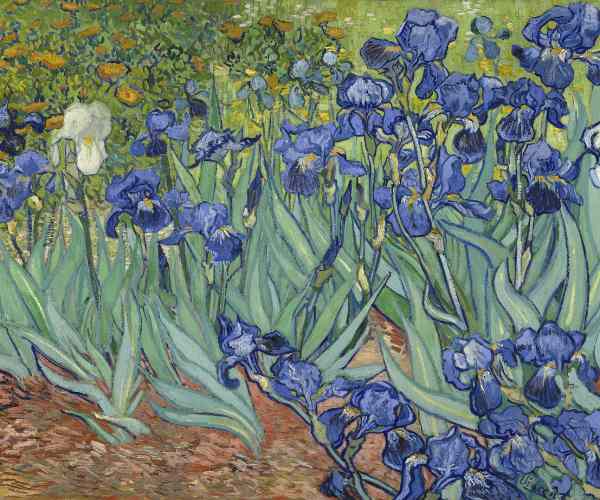Comparative Analysis: 20th vs. 21st Century Art Movements elaborates on the transition that art underwent during the lifetime of the 20th and 21st century. Such an understanding pieces the history of art with contemporary practices that permeate the current age and society.
In the 20th century, Fusion arts like Impressionism, Cubism, and Futurism took art to the next level and largely differed from the traditional styles and ways of doing art. As we entered in the 21st century, contemporary trends like digital art and eco-art came into existence due to technology and more emphasis on environment. This analysis does not only seek out important artistic movements but also interviews artists and their contribution to society through art which showcases how art is intertwined through culture values through the sands of time.
Art Movements of the Twentieth Century
- Impressionism: The term was first coined in the late 19th to early 20th century and began with painters such as Claude Monet. Impressionist artists sought to capture light and color instead of intricate details which in turn was a break from traditional models of painting. Impressionists applied rough paint with off-precise colors to create scenes from snap shots of everyday life. Monet’s Impression: Sunrise (1872), which is a non grand portrait of the port of Le Havre, is an excellent example of this practice where light and tone rather than precise details were the focus. This then paved the way for such an emerge shift in art in comparison to the historical and religious themes which were typically found in older styles of art traditions.
- Cubism: Picasso and Braque sought to change the way objects were drawn, thus changing the art cycle. With Cubism, subjects were cut into smaller geometric shapes and shown in various perspectives simultaneously, thereby changing the course of pictorial perspective and form. For example, Picasso’s ‘Les Demoiselles d’Avignon’ depicts the human body in angular planes. This proves the evolution that the movement underwent, as it is now more concerned about abstraction as well as a reality that is more fragmented. The initial definitions of a cubist painting were able to set the pace for a new branch later in abstract art, where the tension between form and space played a key role.
- Futurism: Back in Italy with Umberto Boccioni alongside other artists, this movement was very obsessed with the speed and technological advances made in that specific time and age. Through the love of technology, this movement honed in on the concept of movement, Boccioni’s Unique Forms of Continuity in Space does encapsulate the idea of movement quite well while also showcasing the impact modernism has on humanistic concepts. The aims of this specific movement were quite simple, they wanted to capture the ideas of speed and transmutation.
Approaching the Mid-20th century
Abstract Expressionism: Started in the mid 20th century in 1940s and 1950s, Abstract Expressionism took pity on the holy grail of emotional abstraction, showing the usage of form. Pioneers of this movement, Pollock and Rothko, widely demonstrated the abilities of colors, textures and forms expressing strong sentiments. A perfect representation of this stream would be Pollock’s No. 5 where the uncontrolled drops give us an insight on a child’s subconscious. Rothko on the other hand is using the color orange and red ‘s that bounds deep resonance in one. Slowly abstract expressionism began to emerge which started shifting away from representative art and transitioned towards inner experiences made during creation.
Pop Art: The famous Warhol and Roy Lichtenstein have gained recognition as the mind behind the popularization of pop art in the 1950s and 1960s, Along with that, this particular genre of art also began erasing the clear distinction between high art and popular culture. As Effie J. Levenson notes, Pop Art sought to redefine art by integrating imagery traditionally avoided by artists including mass-media imagery, as well as consumer products, thereby painting everyday objects. For example Campbell’s Soup Cans by Warhol in 1962 and Lichtenstein’s Whaam! painted in 1963 makes muscle of commercial techniques, commercial art, and pop images to iterate consumerism and media saturation. It is Pop art’s popular commercial approach, which has altered previous ideas regarding the artist and the artistic audience.
Minimalism: In the range of 1960s especially late 1960s, this art movement came into will aimed at fighting against expressionism which was abstract and complex, deeper. Minimalism as it’s better known has a more direct approach that involved refining art to its purest form, so to say simplicity. Judd and Agnes Martin were notable artists that adopted an axiomatic use of geometric shapes, specific color ranges and neat lines to illustrate what it feels like to experience art. Donald Judd in Untitled,1976 and Martin in On a Clear Day, 1964 didn’t shy away from offending a2 gritty art that was minimalistic but with heavy emphasis on material and geometry rather than any form of abstract expression. Emphasizing clarity and simplicity as opposed to emotive intensity that was common in the previous forms of art was the movement’s defining characteristic.
Late 20th Century Modernism to Postmodernism Modernism was the movement of the mid-20th century, but its notions were criticized and abandoned in the late 20th century, giving rise to postmodernism. In simple words, postmodernism doesn’t adhere to set rules, rather defies all truth claims that were recognized as art. It’s true that pluralism is the dominant ideology, for both Koons and Sherman (and Baroque too, to a degree with his ‘}({) construction). Koons’ Balloon Dog mixes high art with advertising and transforms it into art that people can love and buy, while Sherman does the opposite – her Untitled Film Stills takes cherished pieces of her past and transforms them into art using the contemporary elements Koons would use. To cut it short, this postmodernist approach ignores all planks of set values, sincerity, and universalism concepts.
Conceptual Art: As the 20th century came to a close, the ideational facet of a work of art was elevated to superiority over its material attributes. This is precisely where Sol LeWitt and Joseph Kosuth enter. They were concerned with the ideas in art making. LeWitt’s Wall Drawing No 1136 (2004) and Kosuth’s One and Three Chairs (1965) give insight into the movement’s evolution towards differentiating between the results and the process, with more emphasis on goals than outcomes. Different approaches to the issue have broadened the scope of what can be done beyond traditional approaches that involve using the brush or paint palette. It often requires written instructions or just a document, which is part of the artwork, and a critique of traditional ways of valuing art and a particular artist.
Art Movements Of The 21st Century
Beginning Of The 21st Century
Street Art: In the early 21st century, street art began to break out of the underground culture into a widely accepted genre. The most telling example is Banksy: Girl With a Balloon (2002) and The Flower Thrower (2003) were received worldwide. Street art can also be used to make statements about social and political issues, where ordinary walls are turned into artistic surfaces. Such a shift in the paradigm seeks to overcome the traditional architectural borders of art, which have allowed for widening the audience. And the development of street art festivals and special galleries contributes to the remnants of this genre in the art world.
Digital Art: With the rise of technology, the traditional practices of art have transformed which leads to the birth of digital art. This umbrella term includes the likes of digital painting, 3D modeling as well as virtual reality. Two major players who are delving into the world of digital media are Rafeal Rozendaal and JODI (Joan Heemskerk and Dirk Paesmans). You can see how Rozendaal’s websites as artworks and JODI’s experimental internet art are redefining the traditional sense of art using the use of digital tools and platforms. Digital art also provides an avenue for greater artistic possibilities through the use of interactivity as well as immersion that was not there before.
Mid-21st century
New Media Art: Now shifting to mid-century 21st, New media art can be seen to be a combination of classical art along with multimedia and interactivity technologies. This encompasses video art, digital installations and interactives experiences. Casey Reas and rafal Lozano-Hemmer are of paramount importance in this field as there works do not shy away from the use of technology. Caseys’s Processing and Reas’s 33 Questions per Minute capture the attention of Art in a light no one saw coming, through the use of technology they create new ways of engaging and interpreting Art.
Eco-Art: Eco-art addresses the problems of ecology and maintains its sustainability. In this movement, people often make things out of materials that have been recycled or demonstrate how human actions affect Mother Nature. Lin’s 2009 project What is Missing? and Goldsworthy’s ephemeral sculptures aim to save people from noting the fact that eco-art is about the binding ties between art and nature in the first place, because it helps tackle environmental problems. Considering the ecological impact, Eco-Art inspires people to rethink their engagement with the earth and its resources.
Recent Developments
Globalization phenomenon:, Globalization has been influential even in artwork, and today artists from different countries who have hybrid art background are making artworks. This trend encourages cross-culture dialogue, which enables creators to travel and absorb various inspirations. For instance, Yayoi Kusama’s Infinity Mirror Rooms and El Anatsui’s Gawu (2006) illustrate the integration of different cultural aspects on the international stage of art. Today, one can see fragments of art from various parts of the world in contemporary artworks which signifies globalization of art.
Identity Politics: Identity politics in contemporary art deals with race, gender, and self, as art is used to contest the problematic aspects of society, and to give voice to personal experience. In such works as those by Kara Walker and Cindy Sherman, issues of identity and images of people are explored. Walker’s A Subtlety (2014) and Sherman’s History Portraits (1988) are both artistic representations that tackle issues such as race and gender in the context of history and sociocultural issues. Politics of identity is therefore concerned with the socio-political implications of art, especially the processes of representation.
Comparative Analysis- Techniques and styles
A comparative analysis of artistic techniques from the 20th and 21st centuries demonstrates a transformation of methods and styles and the development that ensued therein.
In the beginning, cubism derived from the empowerment of artist such as Georges Braque and Pablo Picasso in the 20th century who tend to reconstruct objects into geometric forms. This art movement advocates the traditional point of view by disentangling an image of an object into various view points. For example cubism’s treatment of objects as in Picasso’s Les Demoiselles d’Avignon(1907) is then said to be an innovation in the manner of representing art by presenting objects in several perspectives at once.
If anything, the minimalism focus that emerged in the mid-20th century was directed towards simplicity and asserting art’s core components. Donald Judd and Agnes Martin, for example, championed the removal of emotion and representation in artworks, utilizing merely clean lines and geometric forms. Concepts like Judd’s Untitled (1967) and Martin’s White Fire (1961) correspond to the Minimalist doctrine of form and shape reduction to the lowest possible component, showcasing a different avenue in regard to the complexity of Abstract Expressionism.
As we approach the 21st century, technology has impacted the approaches involving new media art and digital art. Digital art includes practices like digital painting, virtual reality, and more, that attempt to reach out beyond the extension of the pre-existing art mediums. For instance, Rafaël Rozendaal views websites as artistic pieces and Ryoji Ikeda integrates data into sound through data.scan (2005) demonstrating how the use of technology could result in artists immersing audiences with interactivity.
Furthermore, new media art incorporates more and more features, including multimedia technology, and different channels of interactivity. Casey Reas and Rafael Lozano-Hemmer are two prime examples that use digital installations and interactive components to reinterpret and engage viewers in refreshing ways. Reas’s Processing Project and Lozano-Hemmer’s 33 Questions per minute (2000) illustrate how New Media Art goes against molding ideologies by the use of technology into the process and finished pieces.
Cultural Impact
Art doesn’t simply reflect society, but it also forms a society. On the other hand, the evolution from modernism’s emphasis on form and technique to a contemporary focus on cultural and technological aspects signifies a shift in the context of society.
The modern world, which is typified by Impressionism, Cubism, and Abstract Expressionism, was primarily concerned with the search for new forms and styles of painting. Claude Monet and the Impressionists portrayed nature as seen at a single instant in many colors, abandoning history and religion as their topic.
At the other end, contemporary art involves the commentary around the culture and its correlation to technology. The Pop Art movement as led by Andy Warhol, for example, combined elite practice with everyday life, using domestic objects and the imagery of the mass media to condemn consumerism and mass society. Popular Culture was epitomized by Andy Warhol’s Campbell’s Soup Cans of 1962, through which pop culture came to consume everything, including commodities, criticizing a society that was intensely fascinated with them.
Eco-art of the 21st century focuses on the problems which society raises towards the environment. The 21st century is estimated to be the age when artists attempt to solve ecological problems through their creations. Maya Lin’s What is Missing? (2009) and Andy Goldsworthy’s environmentally sculpted works are some of the best examples of global issues addressed by art.
The Effects of Technology
The use of creative technology and mediums has proven to have a major effect on how art is made and how it is dispersed, as well the interaction with the target audience.
Digital Art, Websites, and strategies show technology as an effective conduit for bridging into a creative space. Virtual Reality Experiences, 3D modeling, and new forms of digital paintings are now included under the tag of art. Such practices allow an artist to stretch his/her hands into another dimension of self expression. For instance, Rafaël Rozendaal websites, and JODI (experimenting with Internet art) by Joan Heemskerk and Dirk Paesmans portray novel means of creating interactive and immersive art through technology.
New Media Art attempts to redefine boundaries by incorporating multimedia and interactivity in addition to more traditional artistic media. Casey Reas and Rafael Lozano-Hemmer produce works which employ video and digital installations and interactive technology to capture new audience members. For instance, Reas’s interactive installation of the Processing project and 33 Questions per Minute (2000) by Calderon Lozano-Hemmer reflects how regional tech equipment alters more contemporary art experiences towards mass interaction.
FAQs
What are the major art movements of the 20th century?
In the 20th century Impressionism, Cubism, Abstract Expressionism, and Pop Art were some of the most dominant art movements. Each movement was pivotal in the development of modern art because it introduced fresh techniques, styles, and themes.
What role has digital technology played in transforming art of the 21st century?
With the introduction of contemporary forms like interactive installations and digital art, technology has broadened the horizons of what an artist can do. These advancements give artists the chance to utilize modern technologies in engaging their viewers in interesting and new ways.
What is Eco-art and what is the need of it?
Eco-art is art that goes beyond its aesthetics and seeks to address pressing ecological issues. It encourages people to be good stewards for the environment by resolving pressing issues through awareness – and it sits at the convergence of arts and environmentalism.
Final thoughts
In short, if you compare the analysis of art movements that took place in the 20th century and the 21st century, you will notice that there are some drastic changes in how art is created, how it is exhibited, and how it is received by society. The shift from modernist forms to postmodern strategies is in itself a qualitative evolution in culture, technology, and art. These art movements outline how an artist must think rather than how art should be created.
More Post



